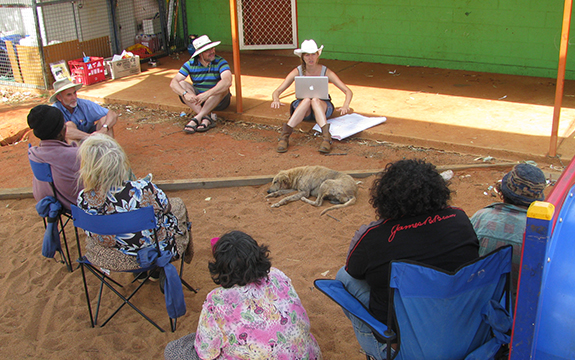Closing the digital divide for Australia’s Indigenous communities

In Summary
- This article featured in Swinburne’s new ‘Research Impact’ magazine, produced in association with Nature Publishing Group
A lack of regular Internet access for many Indigenous Australians in remote communities puts them at considerable disadvantage as essential services, including social welfare, healthcare and employment opportunities, are increasingly available online.
Now, for the first time, researchers are trying to figure out why and what measures could be put in place to improve an Internet usage rate as low as four per cent in some isolated regions.
Swinburne’s Home Internet in Remote Indigenous Communities project was the first multi-year study examining Internet use and adoption in Australia’s remote Aboriginal communities. One part of the project trialled home-based Internet and technology hardware in three outstations in central Australia. It also examined Internet access and use in two communities: one that had mobile Internet and another sharing a computer room. It was lauded as a “landmark study” in the Federal Government’s recent regional telecommunications review.
When Swinburne University of Technology researcher, Associate Professor Ellie Rennie, and her colleagues started investigating why Internet use was so low in some Indigenous communities, they discovered several assumptions on how best to provide Internet weren’t having the desired effect. “One was that a shared Internet facility, or a computer room approach, was the most culturally appropriate way to deal with the digital divide,” says Rennie, an associate professor and the deputy director of the Swinburne Institute for Social Research.
In fact, they found people preferred their own devices. Communal Internet use could even be impeded by social relationships, such as when the death of a young man who had been running a computer room caused some people in his kinship network to avoid using it.
The team also found post-paid contracts were problematic, with people needing prepaid credit that could be used according to their finances. It offered recommendations such as the potential to develop businesses that would facilitate prepaid access to the Internet via satellite, similar to the way hotels sell short-term Wi-Fi.
“It’s an issue that needs creative solutions and it’s now up to Internet retail service providers, local organisations and stores to get involved,” Rennie says.
The project was in collaboration with Indigenous organisations, the Centre for Appropriate Technology and the Central Land Council, as well as the Australian Communications Consumer Action Network. It also opened the way for other partnerships: including a new Telstra funded Cyber Safety project, which emerged when elders raised concerns about bullying.
Mark Sulikowski is the senior advisor for Indigenous Digital Capability at Telstra. When he visits remote Indigenous communities he takes the opportunity to sit down and talk with the locals. “I’m not there as a corporate, I’m just one person talking to another person,” he says.
Sulikowski says Telstra funded the Cyber Safety project as part of its Reconciliation Action Plan; which also commits to improving telecommunications infrastructure for remote Northern Territory communities. “We want to use what we find to drive public policy and debate, and to ensure everyone has a positive experience in the digital world,” he says.

